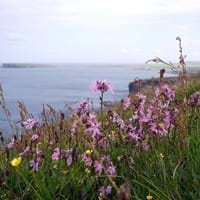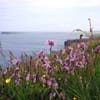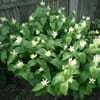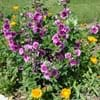Life Span
Perennial
Perennial
Origin
Europe, Eastern Europe, Northern Europe, Southern Europe, Western Europe, Russia, Siberia
Australia
Types
not available
Not Available
Habitat
damp meadows, ditches, Fields, Hay fields, shores, springs, Swamps
Scrubs, tussock grasslands, Upland savannas
USDA Hardiness Zone
3-7
10-11
Sunset Zone
1a, 1b, 2a, 2b, 3a, 3b, 4, 5, 6, 7, 14, 15, 16, 17
8, 9, 12, 13, 14, 15, 16, 17, 18, 19, 20, 21, 22, 23, 24
Habit
Rosette/Stemless
Upright/Erect
Flower Color
White, Pink, Light Pink, Rose
Lemon yellow
Flower Color Modifier
Bicolor
Bicolor
Fruit Color
Purple, Bronze, Brown
Gray Green
Leaf Color in Spring
Green
Blue Green
Leaf Color in Summer
Dark Green
Blue Green
Leaf Color in Fall
Dark Green
Blue Green
Leaf Color in Winter
Light Green
Blue Green
Leaf Shape
Long linear and narrow
Long Narrow
Plant Season
Spring, Summer
Spring
Sunlight
Full Sun, Partial Sun
Full Sun
Type of Soil
Clay, Loam, Sand
Loam, Sand
The pH of Soil
Acidic, Neutral, Alkaline
Acidic, Neutral, Alkaline
Soil Drainage
Average
Well drained
Bloom Time
Late Spring, Early Summer
Spring, Late Winter
Tolerances
Drought
Drought
Where to Plant?
Container, Ground, Pot
Ground
How to Plant?
Divison, Seedlings
Seedlings
Plant Maintenance
Low
Medium
Watering Requirements
Water daily during growing season
Do not water excessively
In Summer
Lots of watering
Lots of watering
In Spring
Moderate
Moderate
In Winter
Average Water
Average Water
Soil pH
Acidic, Neutral, Alkaline
Acidic, Neutral, Alkaline
Soil Type
Clay, Loam, Sand
Loam, Sand
Soil Drainage Capacity
Average
Well drained
Sun Exposure
Full Sun, Partial Sun
Full Sun
Pruning
Remove deadheads
Remove dead or diseased plant parts, Requires little pruning
Fertilizers
All-Purpose Liquid Fertilizer, Fertilize in early spring, Fertilize the soil before planting, organic fertlizers, slow-release fertilizers
All-Purpose Liquid Fertilizer, No fertilizers needed
Pests and Diseases
Healthy tree
Insects, Root rot
Plant Tolerance
Drought
Drought
Flower Petal Number
Single
Single
Foliage Texture
Medium
Fine
Foliage Sheen
Glossy
Matte
Attracts
Bees, Bumblebees, Butterflies, Hoverflies, Insects
Butterflies
Allergy
allergic reaction
Asthma, Eye irritation, Headache, Nose Irritation, Throat itching, Vomiting
Aesthetic Uses
Showy Purposes
Showy Purposes
Beauty Benefits
Skin irritation, Skin Problems
Not Available
Environmental Uses
Air purification
Air purification, soil stabilisation
Medicinal Uses
Not Available
Not Available
Part of Plant Used
Whole plant
Flowers, Sap, Seeds
Other Uses
Oil is used in perfume, soaps, creams, etc., Used as Ornamental plant
Used as a dye, Wood is used fore making tools
Used As Indoor Plant
No
No
Used As Outdoor Plant
Yes
Yes
Garden Design
Bog Garden, Wildflower
Shade Trees, Street Trees
Botanical Name
LYCHNIS flos-cuculi
ACACIA aneura
Common Name
Ragged Robin
Mulga, True Mulga
In Hindi
Ragged Robin
Mulga
In German
Kuckucks-Lichtnelke
Mulga
In French
Ragged Robin
Mulga
In Spanish
petirrojo desigual
Mulga
In Greek
ragged Robin
mulga
In Portuguese
Ragged Robin
Mulga
In Polish
Ragged Robin
Mulga
In Latin
Robin ragged
Mulga
Phylum
Anthophyta
Magnoliophyta
Class
Equisetopsida
Magnoliopsida
Order
Caryophyllales
Fabales
Family
Caryophyllaceae
Fabaceae
Clade
Angiosperms, Core eudicots, Eudicots
Angiosperms, Eudicots, Rosids
Tribe
Not Available
Not Available
Subfamily
Not Available
Not Available
Number of Species
Not Available
Not Available
Difference Between Ragged Robin and Mulga Tree
If you are confused whether Ragged Robin or Mulga Tree are same, here are some features about those plants to help you choose better. Many people think that these two plants have the same characteristics, but one can see Ragged Robin and Mulga Tree Information and learn more about it. Fertilizers required for proper growth of Ragged Robin are All-Purpose Liquid Fertilizer, Fertilize in early spring, Fertilize the soil before planting, organic fertlizers and slow-release fertilizers, whereas for Mulga Tree fertilizers required are All-Purpose Liquid Fertilizer and No fertilizers needed. Hence, one should know the basic difference between Ragged Robin and Mulga Tree if you are planning to have them in your garden to enhance its beauty.
<
Flowering PlantsImportance of Ragged Robin and Mulga Tree
Want to have the most appropriate plant for your garden? You might want to know the importance of Ragged Robin and Mulga Tree. Basically, these two plants vary in many aspects. Compare Ragged Robin and Mulga Tree as they differ in many characteristics such as their life, care, benefits, facts, etc. Every gardener must at least have the slightest clue about the plants he wants to plant in his garden. Compare their benefits, which differ in many ways like facts and uses. The medicinal use of Ragged Robin is Not Available whereas of Mulga Tree is Not Available. Ragged Robin has beauty benefits as follows: Skin irritation and Skin Problems while Mulga Tree has beauty benefits as follows: Skin irritation and Skin Problems.
Compare Facts of Ragged Robin vs Mulga Tree
How to choose the best garden plant for your garden depending upon its facts? Here garden plant comparison will help you to solve this query. Compare the facts of Ragged Robin vs Mulga Tree and know which one to choose. As garden plants have benefits and other uses, allergy is also a major drawback of plants for some people. Allergic reactions of Ragged Robin are allergic reaction whereas of Mulga Tree have Asthma, Eye irritation, Headache, Nose Irritation, Throat itching and Vomiting respectively. Having a fruit bearing plant in your garden can be a plus point of your garden. Ragged Robin has showy fruits and Mulga Tree has no showy fruits. Also Ragged Robin is flowering and Mulga Tree is not flowering . You can compare Ragged Robin and Mulga Tree facts and facts of other plants too.





